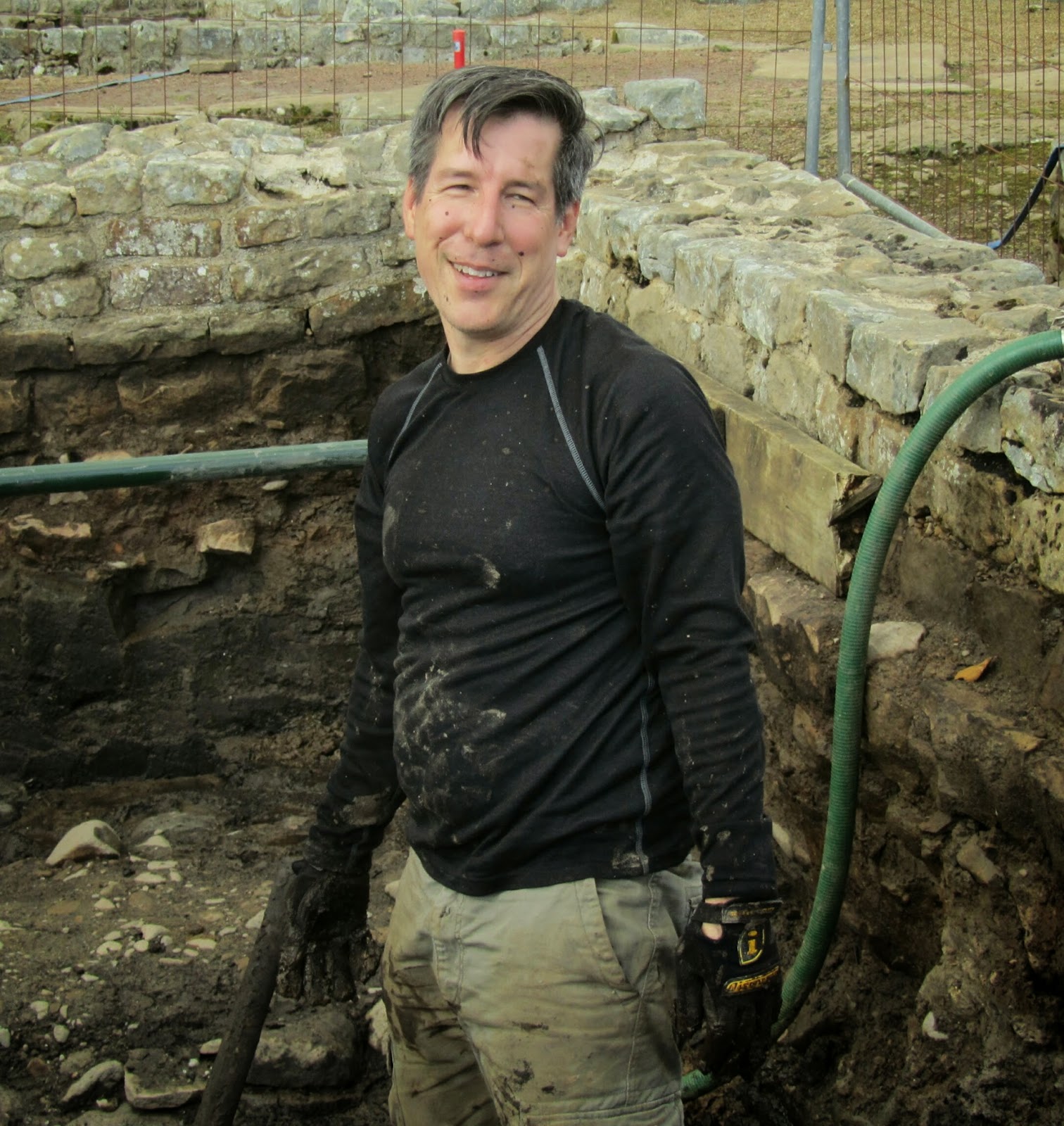I am going to have a hard time making today's post interesting. The subject matter is: mud.
We are still dropping down to the hopefuly productive layers where organic material slumbers pristine after 1800 years. But we are not there yet. In our way are layers of rock, clay and mud.
The problem is that the Romans were so damned diligent in their efforts to create firm foundations in this swampy place. Wagon loads of solid clay were excavated miles away and with tools made primarily of wood. Laboring horses and mules hauled it up the steep hill to the fort site. Lacking wheel barrows they had to transfer the stuff in - we think -wicker baskets. Then add layers of rock and rubble and pack it down. Repeat as needed.
In addition to the formidible barrier thus created we have another problem. The dense clay acts as a drain field for the surrounding area. And it rains. Almost every day.
So water pours in, making our task a sloppy wrestling match. Sometimes you can hardly see your tools under their coating of gummy glop.
You will have to take my word for it, there is a mattock in there somewhere.
Progress is slow.
You have rusty mud where the local low grade iron has leached into the soil. You have grey mud that is exactly the consistency of modeling clay. In fact, you could just pick out a few random bits of charcoal and pottery and use the stuff we are digging in for that purpose. When it rains you get slovenly liquid mud, as water tumbles down through still functioning Roman street drains to generate clinging slime. It splatters on my fellow diggers when we toss rocks into our wheelbarrows.
And somewhere , about a foot deeper, lies the dark and mysterious anaerobic mud. Occasionally we come across a small clump of it. You hold it up and inhale the vile yet wonderful odor. It smells of promise.





1 comment:
Enjoying very much your posts about your current project! Almost like being on my first "dig".
Post a Comment